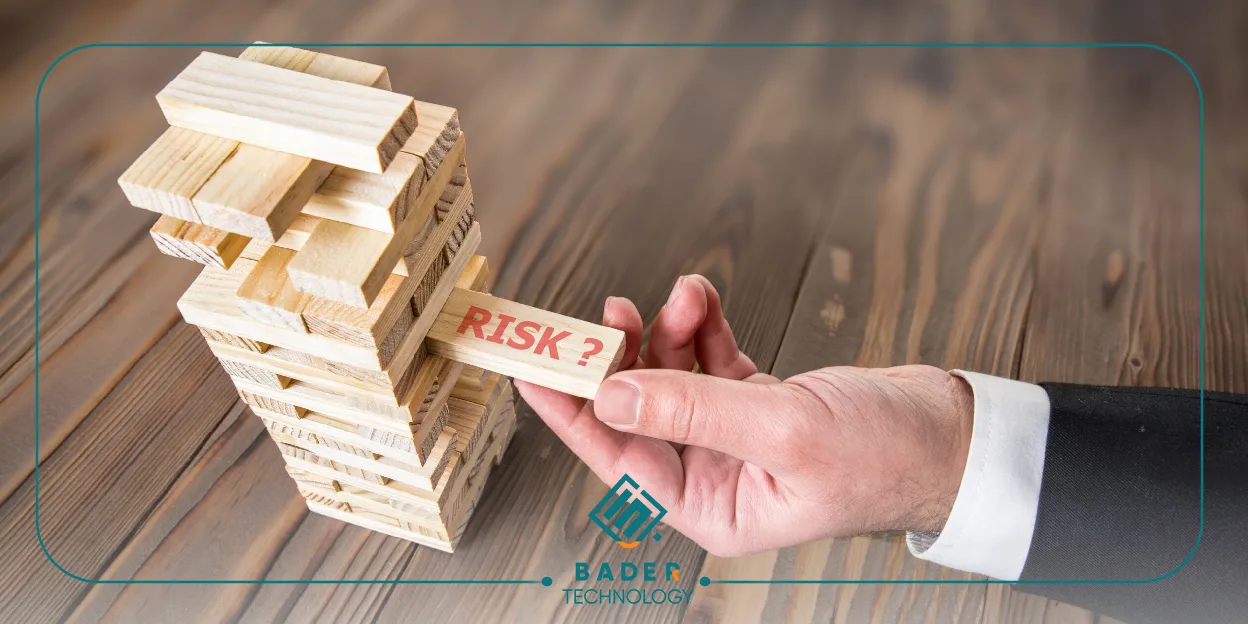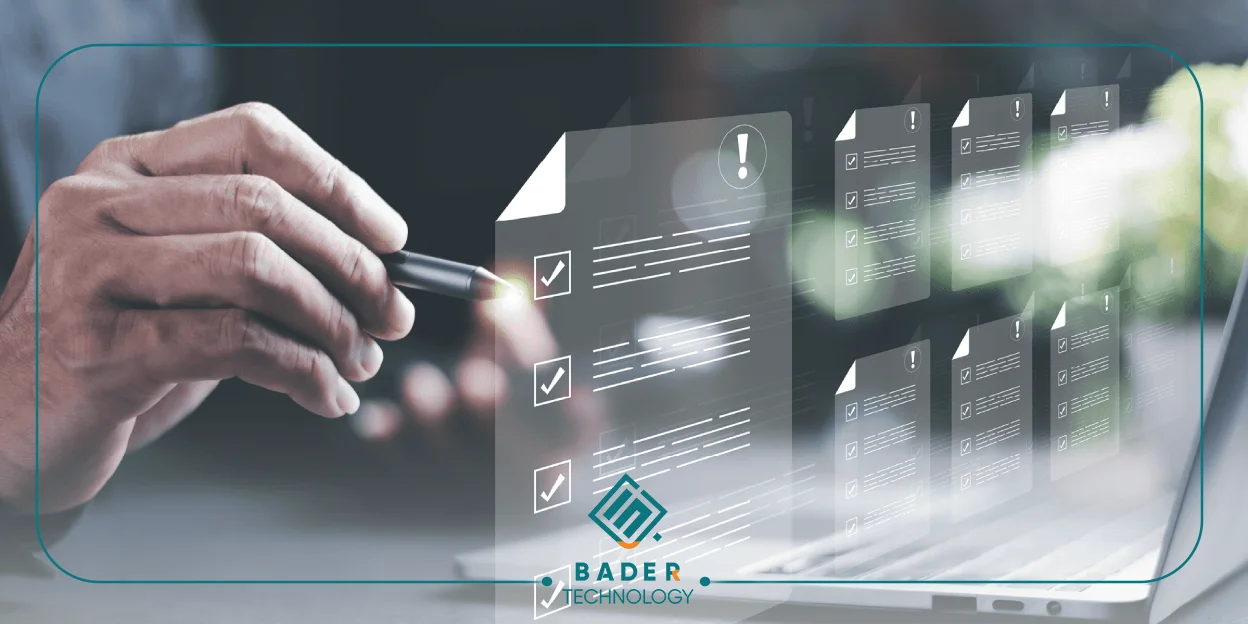
Risk management is a crucial process that serves as the foundation for the success of any institution or project in the modern world. In light of economic challenges and the continuous changes in the business environment, risk management has become an urgent necessity to ensure the sustainability of companies and protect them from potential risks.
But what exactly is risk management? It is a set of processes aimed at identifying potential risks, assessing them, and finding appropriate solutions to handle them. The risks companies and institutions may face vary, ranging from financial risks and operational risks to legal and strategic risks.
The importance of risk management lies in its ability to protect companies from significant losses that could impact their reputation and profits. By applying effective risk management strategies, negative effects can be minimized, and the opportunities available can be maximized.
In this article, we will explore the definition of risks, their types, what risk management means in government institutions, the types of risks faced by institutions, the importance of risk management in building sustainable strategies, and the tools and techniques used in managing these challenges. Keep reading to learn more about this vital process that has become a cornerstone of any successful organization.
What is Risk Management?
What is risk management, or what is the concept of risk management? Risk management is a logical and methodical process aimed at identifying, assessing, and analyzing potential risks that might affect the workflow of any organization or project. Risk management is considered a cornerstone to ensuring the sustainability of organizations and protecting them from losses that may arise from environmental, economic, or even technological changes.
The importance of risk management lies in its ability to provide strategic solutions that help reduce the negative effects on individuals and institutions. It is not just a process for dealing with current problems, but also a tool to anticipate different types of risks, such as financial risks, operational risks, and strategic risks, thus improving the ability to face future challenges.
Through the process of identifying and assessing risks, institutions can build clear strategies to reduce or eliminate the negative impacts of these risks. Therefore, risk management is a vital process for maintaining organizational stability and enhancing its adaptability and growth.
In this context, project risk management is considered an essential tool for ensuring long-term project success, as it helps identify potential risks and plan for them in advance.
What are the Types of Risk Management?
What are risks and what are their types? Risk management is one of the core aspects of business, as it helps companies and institutions predict the risks they may face, assess them, and develop strategies to deal with them. However, when we talk about the types of risk management, we find that the process is not limited to just one type of risk but includes a variety of risks that vary depending on the operational environment and the field in which the institution operates.
-
Financial Risks
One of the most common types of risks, it includes risks related to fluctuations in financial markets, inflation, interest rate changes, or sharp declines in asset values. Financial risk management focuses on minimizing the impact of these risks on the financial stability of institutions. -
Operational Risks
Operational risks are related to anything that may affect the daily operations of the institution, such as technical failures, logistical issues, or employee errors. Managing these risks requires putting plans in place to mitigate them and ensure smooth continuity of operations. -
Strategic Risks
Strategic risks affect the long-term goals of an institution. These risks might be linked to market changes or management decisions that impact the company's direction. In this case, it is important for companies to set clear strategies to adapt to any changes that might occur. -
Legal Risks
Legal risks represent the challenges that institutions face due to changes in local or international laws and regulations. Managing these risks involves keeping track of legal changes continuously and ensuring the institution complies with the prevailing laws. -
Technological Risks (or IT Risks)
In the digital age, technological risks are among the most dangerous types of risks that institutions may face. These risks include cyber threats such as hacking, security breaches, and system failures. Managing technological risks requires setting up effective security and protection systems to ensure operational continuity. -
Environmental Risks
Environmental risks refer to threats resulting from natural disasters such as floods, earthquakes, or climate changes. These types of risks are critical for organizations that depend on a specific work environment or industries that impact the environment.
The types of risk management vary depending on the fields of work and the nature of the projects being carried out. By understanding these types and implementing effective strategies to manage them, institutions can ensure the continuity of their operations amidst growing challenges.
Importance of Risk Management
If you are asking yourself "What is risk management?" and "What is the importance of risk management?" Risk management is essential for the sustainability and success of any organization or project. Below are the main reasons why risk management is vital in today's business world:
-
Enhancing Financial Stability:
By applying financial risk management strategies, institutions can protect themselves from sudden economic fluctuations, such as interest rate fluctuations and currency exchange rate changes. This process contributes to the financial stability of the institution and strengthens its ability to expand. -
Protecting Assets and Resources:
Operational risk management helps institutions protect their assets and resources from risks that may affect workflow, such as breakdowns or unforeseen accidents. Therefore, it ensures continuous operations at the highest possible efficiency. -
Adapting to Changes:
Strategic risk management enables institutions to adapt to changes in the business environment, helping them keep up with future transformations. By identifying potential strategic risks, flexible plans can be developed to ensure business sustainability. -
Protecting Reputation:
Legal risks are one of the most significant threats to an institution’s reputation. By applying legal risk management, institutions can ensure compliance with local and international laws, protecting their reputation and enhancing customer trust. -
Project Risk Management:
In project risk management, it is important to identify potential risks in advance, such as financial, legal, or operational risks, and plan strategies to deal with them to ensure project success without setbacks. -
Protecting Technical Systems:
With the increasing digital threats, technological risk management is essential to protect information and systems from cyberattacks. Providing necessary security measures ensures the protection of data and technical systems in institutions.
Career Opportunities in Risk Management Jobs
What is a risk management job? Risk management is a vital field that provides many job opportunities in various industries, and it is important to understand what risk management is and the opportunities available after learning it. With the growing challenges faced by companies and institutions in the modern era, the need for risk management specialists has become indispensable. Risk management jobs offer many exciting opportunities for professionals looking to develop their skills in this specialized field.
Types of Risk Management Jobs
-
Operational Risk Manager:
This role focuses on managing operational risks in an institution. It requires the ability to analyze the daily risks that may affect workflow and make decisions to reduce them. -
Financial Risk Expert:
Specializes in dealing with financial risks that may affect the financial stability of the institution. Responsibilities include analyzing market fluctuations, managing credit risks, and dealing with potential financial crises. -
Project Risk Manager:
In this role, the specialist identifies risks associated with large projects, such as schedule delays or budget overruns. This role requires skills in project risk management. -
Risk Management Consultant:
Risk management consultants provide their expertise to companies across different industries, helping them assess risks and develop strategies to mitigate negative impacts. -
Legal Risk Manager:
This role focuses on analyzing legal risks that companies may face due to changes in regulations and laws. The legal risk manager ensures the institution’s compliance with all local and international laws.
Best Risk Management Courses in Saudi Arabia
When asking "What is risk management?" and "What is the best risk management course?" risk management courses in Saudi Arabia are one of the best ways to develop individuals' and institutions' skills in handling potential risks and learning the basics of risk management. Through these courses, participants learn how to identify risks, assess them, and create effective strategies to mitigate their impact on businesses. Whether the course focuses on financial risks, operational risks, or project risk management, these courses provide the fundamental knowledge to qualify professionals to face challenges in different work environments.
In Saudi Arabia, several institutions offer accredited training courses that provide credible certificates, enhancing job opportunities, especially in fields that require specialized skills in risk management.
How to Get an Accredited Risk Management Certification
When thinking about what risk management is and how to get an accredited risk management certificate, it is an important step for any professional looking to stand out in their field. Accredited certificates are one of the best ways to enhance professional skills and increase job opportunities, especially in areas like financial risk management, operational risk management, and project risk management.
To obtain this certificate, you need to go through several basic steps:
-
Enroll in an Accredited Course:
Choose a risk management course from an internationally recognized educational or training institution. Make sure the course provides comprehensive content covering different types of risks and how to handle them. -
Complete the Training Program:
After enrolling in the course, you must complete all required assignments and modules. Some training courses offer remote learning opportunities, making it easier for trainees from various locations to obtain the certificate. -
Pass the Exams:
After completing the course, you will typically need to take an exam to assess the knowledge and skills acquired in risk management. You must pass the exam to receive the accredited certificate. -
Leverage Professional Networks:
Once you obtain the certificate, you can join professional networks in the field of risk management, which enhances your employment opportunities and helps you stay up to date with the latest developments in the field.
Are you ready to understand what risk management is and how to apply it in your work? By obtaining a risk management certificate, you will be able to enhance your skills, increasing your ability to tackle risks in different work environments and contributing to the improvement of your professional reputation.
FAQ
FAQ
What is the Difference Between Risk Management and Crisis Management?
Risk management is a preventive process aimed at identifying and assessing potential risks that an organization may face, then developing strategies to mitigate their impact before they occur. It focuses on proactive analysis and preventive measures. Crisis management, on the other hand, deals with unexpected events that arise suddenly and cause significant damage. It focuses on how to handle the crisis immediately after it occurs, to minimize its impact and recover quickly. In short, risk management focuses on prevention and preparedness, while crisis management focuses on immediate response and recovery after the issue occurs.
